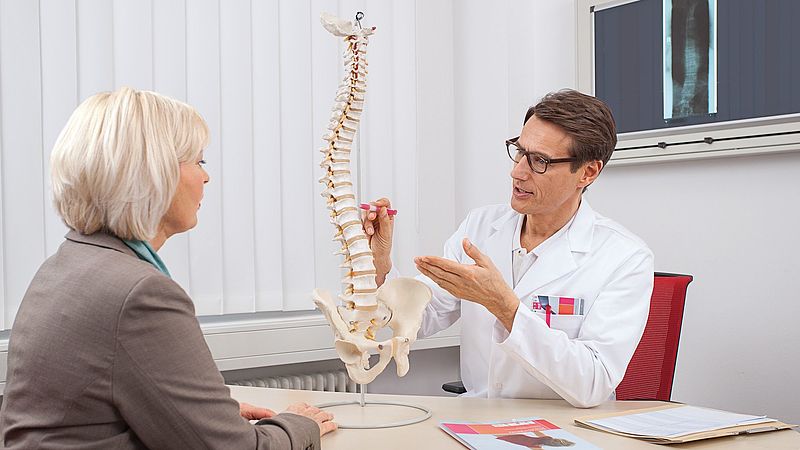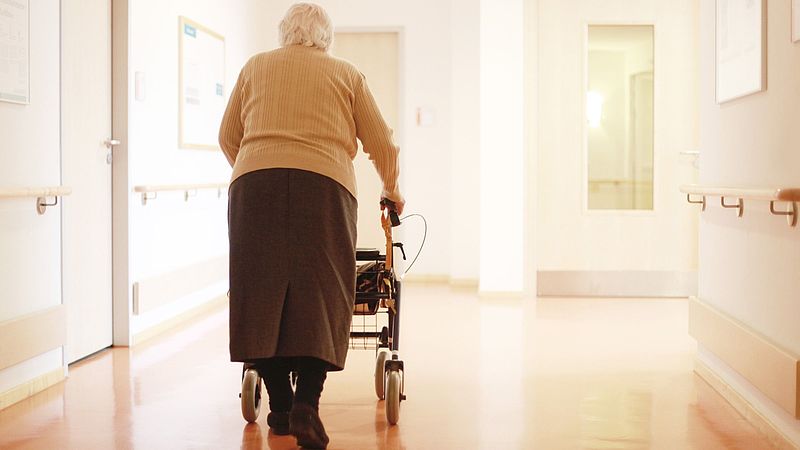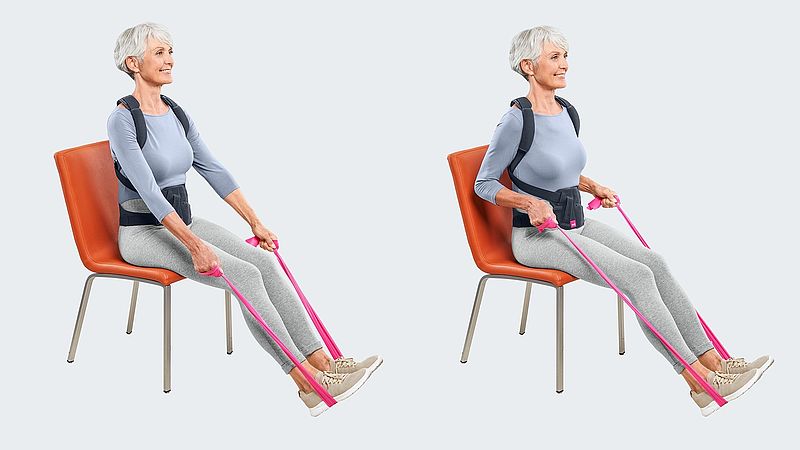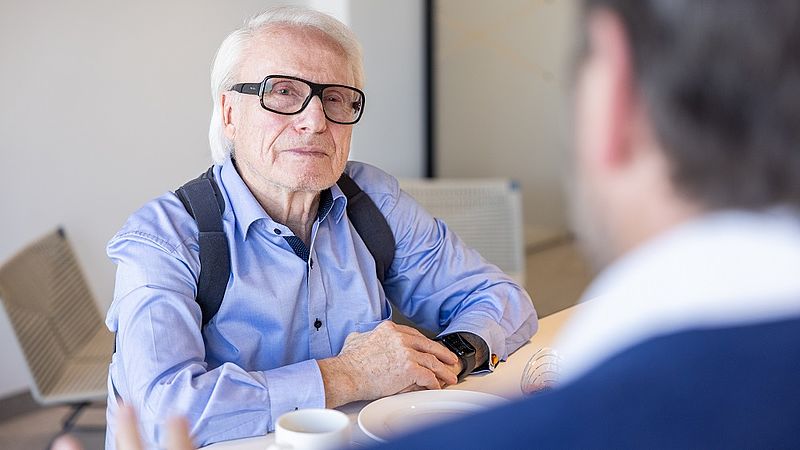Osteoporosis is a common disease
Osteoporosis is one of the most common ailments afflicting the general population. According to the World Health Organisation (WHO), bone loss is one of the most serious diseases of our time: in Germany, one out of every four women and a total of 6.3 million people over the age of 50 are affected. In Germany, around 885,000 people are diagnosed with osteoporosis each year.1

Osteoporosis: prevention, symptoms and therapy
Osteoporosis causes the bones to become porous. That means they become more fragile and break more easily. Learn more about the clinical symptoms: How can you prevent osteoporosis? What signs and symptoms indicate osteoporosis and what therapy options are available.
Info about the clinical symptoms of osteoporosis
Sequelae of osteoporosis: reduced bone density can lead to vertebral fractures
Learn why bones become prone to fractures in osteoporosis. Even a small amount of force is often sufficient to cause bone fractures. They mostly occur in the back: along the spine.Learn about the details.
Everything you need to know about vertebral fractures
Dowager’s hump in osteoporosis: Why does the back deform?
Osteoporosis can lead to vertebral fractures. Left untreated, this can lead to a curved back development of the back and to a loss of height. What causes dowager’s hump? What can you do to alleviate the chronic pain? Read more about it.
More about dowager’s hump
Exercises and sport for osteoporosis
Movement, gymnastics, strength and balance training strengthen muscles, bones and sense of balance. In addition, these provide a sense of security in everyday life and reduce the risk of falling. The more continuously osteoporosis patients are physically active, the more mobile they are in everyday life. Find out which exercises and types of sport are suitable.
to the exercisesWhat role does nutrition play in osteoporosis? Ant what is the effect of biofeedback?

Osteoporosis therapy with Spinomed back orthoses
Spinomed spine-straightening back orthoses as part of guideline-compliant osteoporosis therapy can counteract dowager’s hump and the resulting
impairments. Studies have shown that Spinomed back orthoses have positive effects: among other things, Spinomed corrects the body’s centre of gravity (which has changed due to poor posture), thus reducing the tendency to sway and the risk of falling. Patients can also breathe more freely again and experience less pain.2, 3
medi products for osteoporosis

Field report: Spinomed orthosis for a curved back
For many years, Erich Fichtner was plagued by severe back pain, which eventually led to a curved back. Since being prescribed the Spinomed back orthosis, the 83-year-old has felt better. Read the interview about the 83-year-old’s experiences with the medical aid.
To the interviewOsteoporosis: guidelines, studies and information for doctors
Medical and scientific information about osteoporosis.
Medical information
Sources
1 Epidemiologie der Osteoporose: Bone Evaluation Study, Deutsches Ärzteblatt 2013,4, 52 ff.
2 Pfeifer M et al. Die Wirkungen einer neu entwickelten Rückenorthese auf Körperhaltung, Rumpfmuskelkraft und Lebensqualität bei Frauen mit postmenopausaler Osteoporose. Eine randomisierte Studie. Am J Phys Med Rehabil 2004;83(3):177-186.
3 Pfeifer M et al. Die Wirkungen von zwei neu entwickelten Rückenorthesen auf Rumpfmuskelkraft, Körperhaltung und Lebensqualität bei Frauen mit postmenopausaler Osteoporose. Eine randomisierte Studie. Am J Phys Med Rehabil 2011;90(5):805-815.







